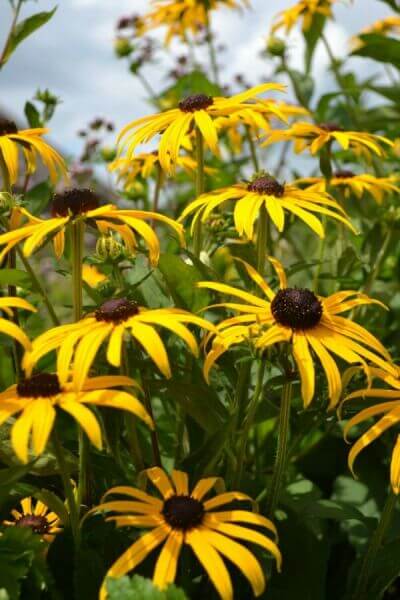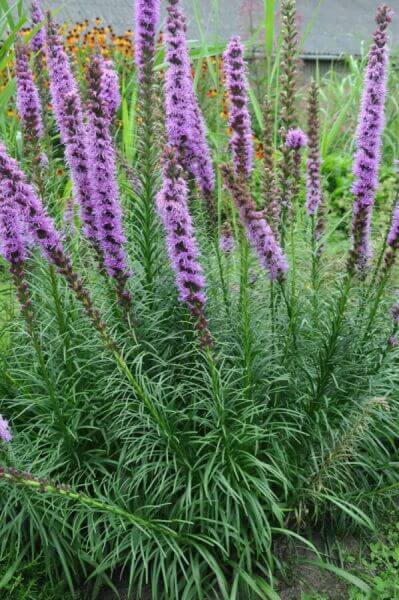Best Hedging Plants For Garden Privacy
Boost your garden's attraction with lavish hedge ranges such as Yew (Taxus), Thuja, Laurel, Photinia, and Bamboo, celebrated for their structural integrity and ecological benefits.
Yew and Thuja supply evergreen coverage and winter season resilience, while Laurel provides quick growth and broad, aromatic leaves.
Photinia includes seasonal charm with its dynamic red foliage, and Bamboo provides a low-maintenance, serene ambiance.
These hedges enhance air quality, lower noise, and produce tranquil, personal areas.
Proper planting, spacing, and maintenance guarantee energetic development and ecological harmony.
Explore how these rich ranges can raise your garden's beauty and well-being.
Key Takeaways
Change Your Garden With Lush Hedge Varieties
- Select Yew for its dense, evergreen growth and unequaled longevity.
- Choose Laurel for its fast development and broad leaves, making sure fast personal privacy.
- Choose Photinia for its vibrant seasonal foliage, which turns a striking dark red.
- Use Bamboo for a low-maintenance, winter-hardy hedge with visual appeal.
- Area plants 2-3 per meter and prune frequently for optimum development and health.
Popular Hedge Plants
When changing a garden with lavish hedge ranges, it's essential to consider popular hedge plants such as Yew, Thuja, Laurel, and Photinia due to their unique characteristics and benefits.
Yew (Taxus) is extremely esteemed for its longevity and dense, green growth, making it a prime choice for sustaining landscapes.
Thuja is kept in mind for its evergreen foliage and robust winter resilience.
Photinia adds seasonal vibrancy with red leaves that darken with time, producing dynamic visual appeal.
Laurel offers quick development and aromatic, broad leaves, ideal for quick privacy.
Furthermore, Bamboo is an outstanding choice for atmosphere, providing a low-maintenance, winter-hardy choice that enhances the garden's visual with its sophisticated, swaying canes.
These selections cater to a range of horticultural requirements and preferences.
Benefits of Garden Hedges
Garden hedges use a wide variety of advantages, making them a valuable addition to any landscape. These natural barriers are affordable to execute and supply significant wind security, improving air blood circulation and contributing to noise reduction. The dense foliage of hedges like Thuja and Beech makes sure personal privacy by blocking visibility, producing a tranquil and secluded environment.
Hedges also play a crucial function in microclimate policy, supplying a steady environment that cultivates plant development and minimizes temperature fluctuations. Their intricate leaf structures filter pollutants, enhancing air quality and contributing to a healthier garden ecosystem.
Moreover, hedges master sound decrease, soaking up and deflecting acoustic waves to lower ambient sound levels. This dual functionality of providing both visual and acoustic privacy enhances the overall tranquility and visual appeal of any garden.
Planting and Upkeep Tips
For a successful hedge, meticulous preparation of the planting area is essential. Ensure the soil has correct pH and drainage to support strong root development.
Area the plants properly for the picked types. Water the hedge often during its initial growth stage, changing as required with seasonal modifications.
Implement a organized bug control and disease prevention method, using chemical or organic treatments when essential. Routinely check for aphids, termites, and fungal infections.
Apply mulch to maintain wetness and suppress weeds. Seasonal pruning promotes thick growth and air circulation, essential for plant health.
Following these standards will help you cultivate a vibrant, properly maintained hedge that improves the beauty of your garden.
Spacing and Cutting Standards
Spacing and Trimming Guidelines
Correct spacing and trimming are vital for cultivating healthy, visually appealing hedges. Sufficient spacing ensures each plant gets adequate nutrients, light, and air flow.
Follow these guidelines for optimum hedge maintenance:
- Spacing: Position hedge plants 2-3 plants per meter to motivate robust development.
- Pruning Methods: Routine pruning is important for keeping preferred hedge height and shape. Cut new development in summer and cut down older wood throughout winter.
- Seasonal Care: Adjust cutting schedules and techniques according to seasonal requirements to guarantee plant health.
- Hedge Height: Frequently monitor and trim to keep the desired hedge height and accomplish consistent visual appeals.
Adhering to these actions will ensure your hedge flourishes, boosting both the appeal and performance of your garden.
Choosing the Right Hedge
Selecting the Right Hedge
Choosing the proper hedge includes evaluating factors such as fully grown height, foliage density, and environmental resilience. Successful hedge plant choice needs understanding each species' growth qualities and site-specific versatility.
For instance, Yew (Taxus) provides outstanding durability and thick development, while Thuja is significant for its winter season strength. Additionally, considering maintenance requirements is vital; fast-growing species like Laurel or Privet demand regular trimming, whereas low-maintenance choices like Bamboo or Ivy might be more suitable for those looking for minimal upkeep.
Environmental factors such as soil type, light schedule, and moisture conditions must also direct the choice process. This careful approach ensures the picked hedges will grow, supplying both functional and aesthetic advantages to the garden landscape.
Shipment and Planting Suggestions
To guarantee your hedge plants prosper, they must be delivered by specialized couriers and planted immediately upon arrival.
Follow these necessary actions for effective planting:
- Soil Preparation: Improve the soil with raw material to improve drainage and nutrient content.
- Planting Depth: Create a trench twice the width and equal to the depth of the root ball.
- Watering Methods: Water thoroughly after planting, keeping the soil consistently damp but not saturated.
- Mulching: Apply a layer of mulch to retain moisture and suppress weeds.
Customer Assistance and Service
Offered the vital function of prompt support in horticultural pursuits, our client assistance team is available six days a week through telephone, e-mail, and social networks to provide expert guidance and swiftly address any issues. Their dedication to quick action times guarantees client complete satisfaction by fixing inquiries related to plant health, optimum planting approaches, and maintenance schedules.

-------------------
Telephone
Within 48 hours
Within 24 hours
This comprehensive support group, strengthened by an outstanding 9.3/ 10 customer ranking, highlights our dedication to boosting the gardening experience for every single client.
Regularly Asked Questions
How Long Does It Consider Hedge Plants to Establish?
Hedge plants usually require one to 3 years to become totally developed, with the precise period varying by types and growing conditions.
Effective care throughout this critical duration is vital for robust growth. Constant watering, vigilant weed control, and Additional resources suitable fertilizer application are essential in promoting strong root development.
For instance, fast-growing types like Laurel may establish quicker, while slower-growing varieties such as Yew may take longer. Thorough maintenance speeds up the establishment procedure, resulting in healthy and thick hedges.
What Are the Best Hedge Plants for Personal Privacy?
The concern of the best hedge plants for privacy includes examining evergreen and deciduous options.
Evergreen hedges like Thuja, Laurel, and Cypress supply year-round protection, ensuring continuous personal privacy.
On the other hand, deciduous hedges such as Beech offer seasonal privacy, shedding leaves in cooler months.
Key maintenance suggestions for personal privacy hedges consist of regular trimming, fertilizing in spring, and appropriate spacing-- usually 2 to 3 plants per meter.
In addition, constant watering and diligent weed removal are essential for promoting healthy, dense growth.
Can Hedge Plants Draw In Wildlife to My Garden?
Yes, hedge plants can draw in wildlife to your garden by supplying important benefits like shelter, food, and nesting websites, consequently boosting regional biodiversity. For circumstances, yew, holly, and laurel are exceptional for bring in birds, while ivy supports a range of pests.
However, it's important to note that there are some drawbacks, such as increased upkeep to manage pests and routine upkeep. Carefully picking and maintaining hedge varieties can help balance these benefits and downsides, eventually promoting a sustainable and dynamic ecosystem in your garden.
Exist Any Flowering Hedge Plants Available?
Yes, there are flowering hedge plants readily available that can improve the appeal of your garden.
For example, Elaeagnus, also called Olive Willow, produces fragrant white flowers in the fall, including a touch of sophistication.
Photinia, another popular option, showcases lively red leaves that grow into an abundant green, producing a dynamic visual effect throughout the seasons.
To make sure these plants grow, it's important to practice appropriate pruning methods and seasonal maintenance, such as cutting new development in the summertime and cutting back in the winter.
These procedures will help keep the health and visual appeal of your flowering hedges.
How Do I Avoid Pests in My Hedge Plants?
To avoid pests in hedge plants, use natural pest control approaches and preserve correct hedge care. Present advantageous pests like ladybugs, which take advantage of harmful insects, to develop a balanced environment.
Regularly examine your hedges for signs of invasion and immediately remove any affected parts to avoid the spread. Ensure the health of your hedges by using well balanced fertilizers and providing sufficient water.
Make use of mulching to retain soil wetness and correct spacing to decrease plant tension and promote robust development. These practices collectively help in minimizing insect concerns and maintaining a healthy hedge.
Conclusion
In essence, selecting the ideal hedge ranges such as Yew, Thuja, and Laurel can transform any garden into a peaceful sanctuary. These plants supply year-round greenery, enhance aesthetic appeal, and deal useful advantages like sound reduction and wind protection.
Appropriate planting methods, precise spacing, consistent watering, and seasonal trimming are crucial for optimum development.
Reputable shipment services and skilled consumer assistance make sure a smooth experience from purchase to planting, making it easier than ever to raise your outside area.
Garden hedges use a multitude of advantages, making them a valuable addition to any landscape. These natural barriers are cost-effective to implement and provide significant wind security, improving air flow and contributing to noise reduction. The dense foliage of hedges like Thuja and Beech ensures privacy by blocking presence, producing a remote and tranquil environment.

Pruning Techniques: Routine pruning is necessary for keeping preferred hedge height and shape. Trim brand-new development in summer and cut back older wood throughout winter.